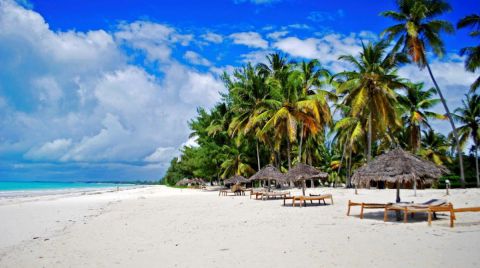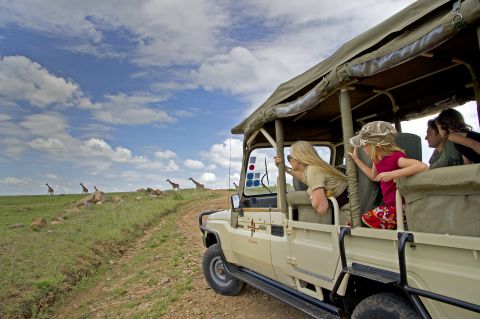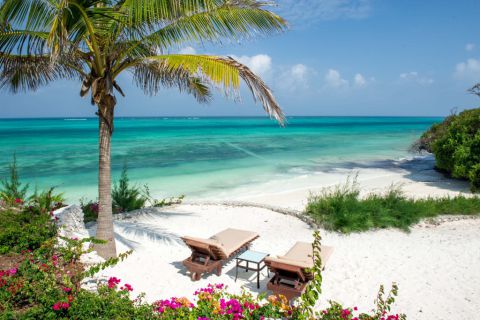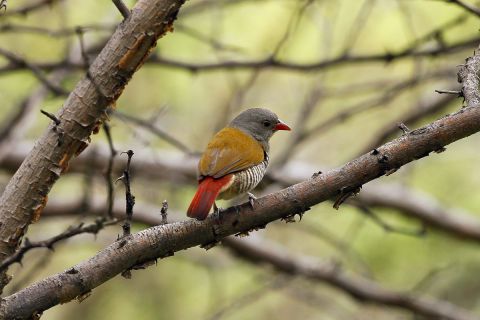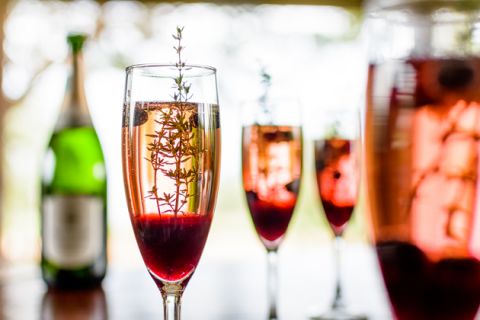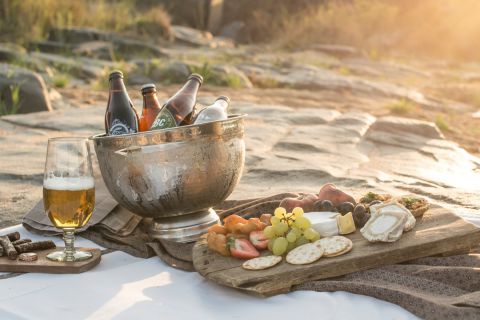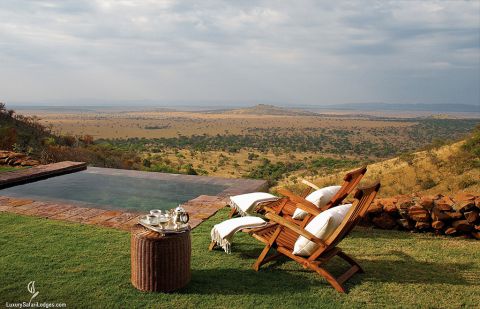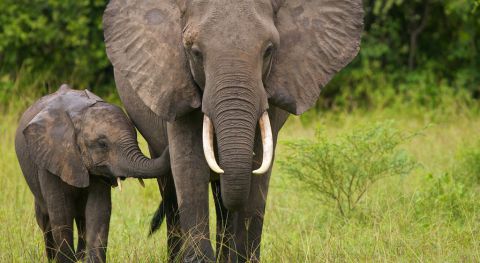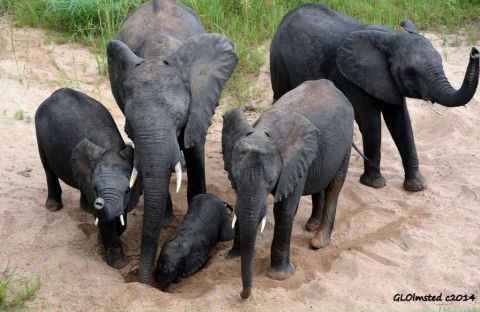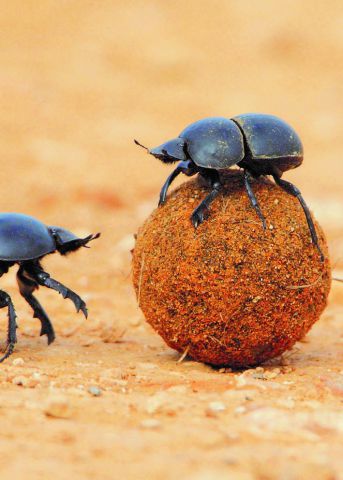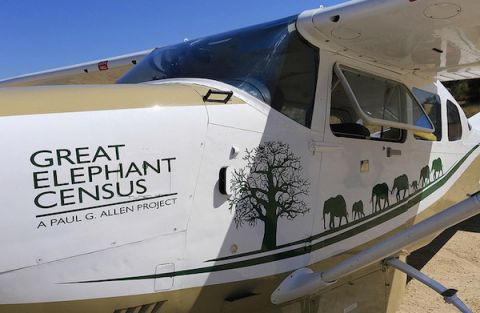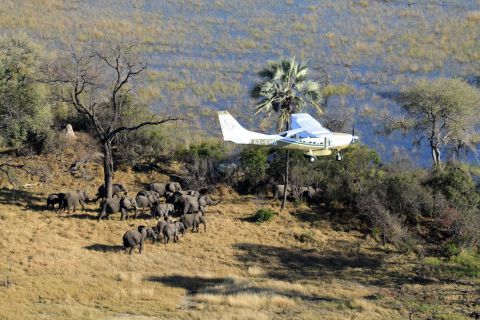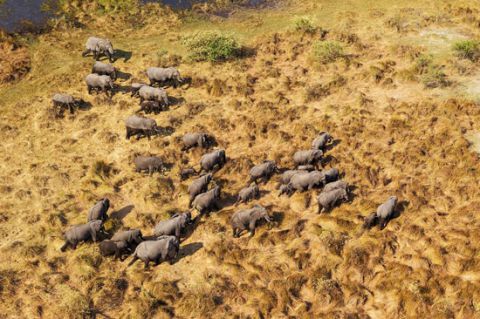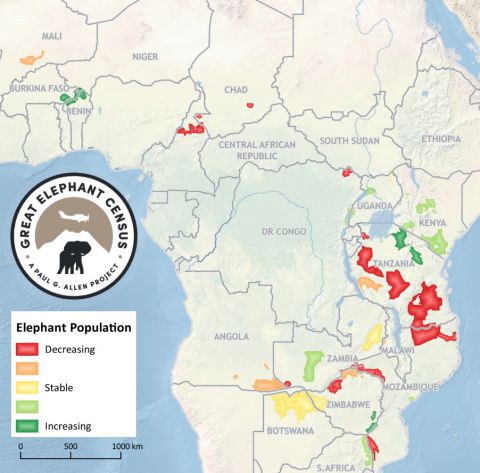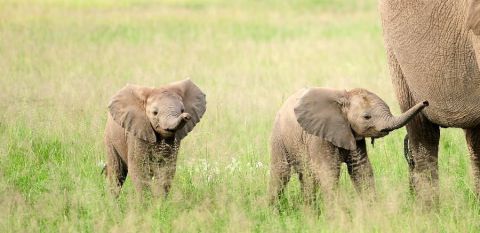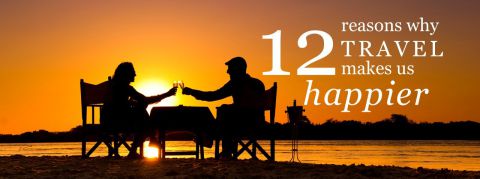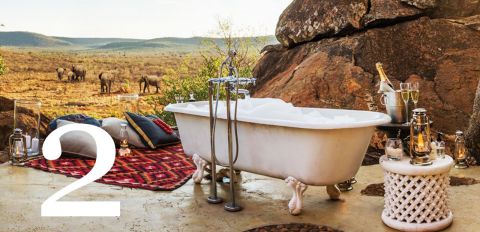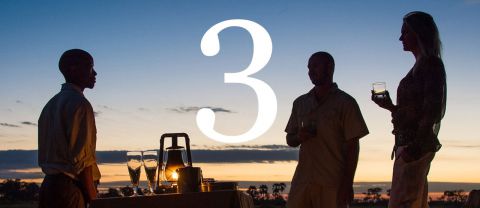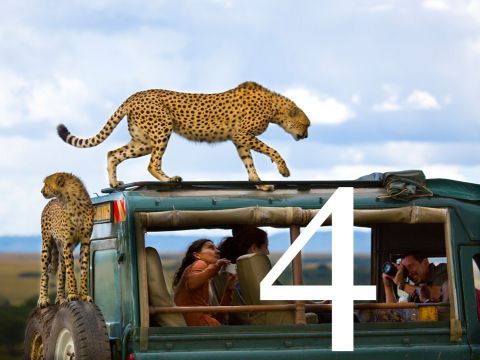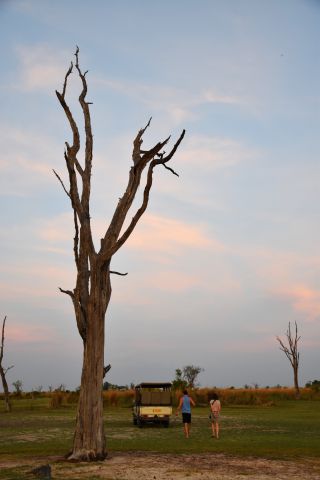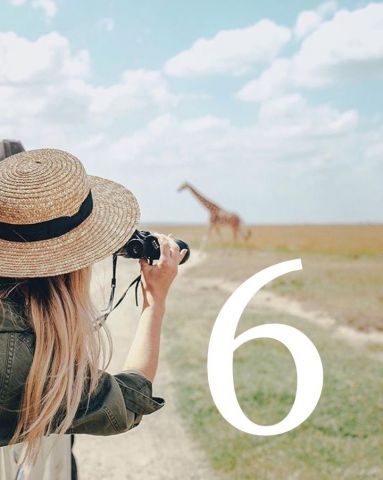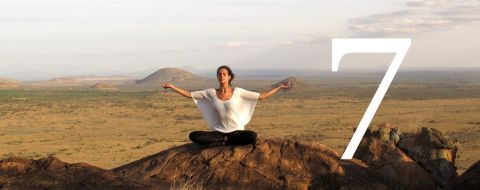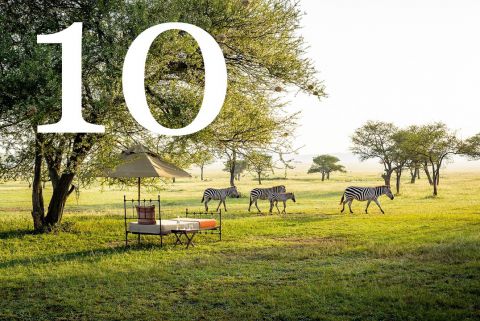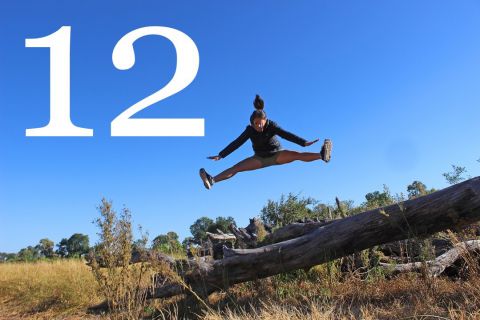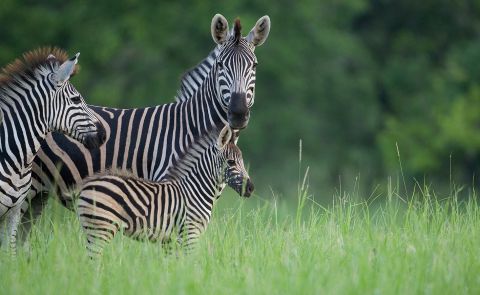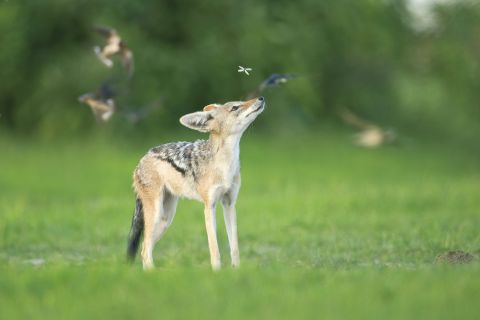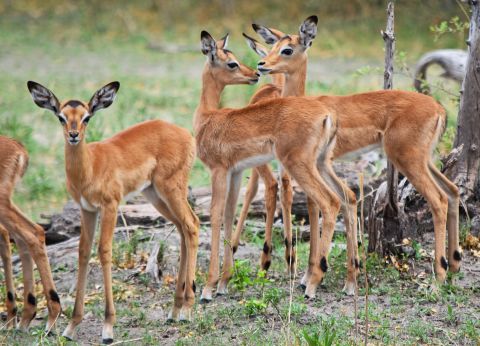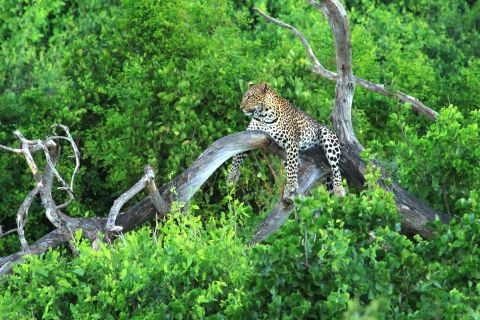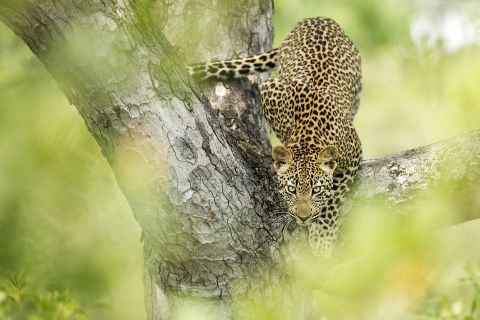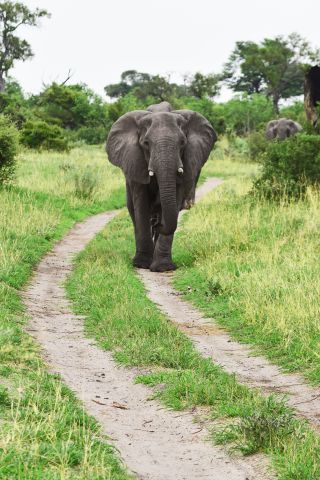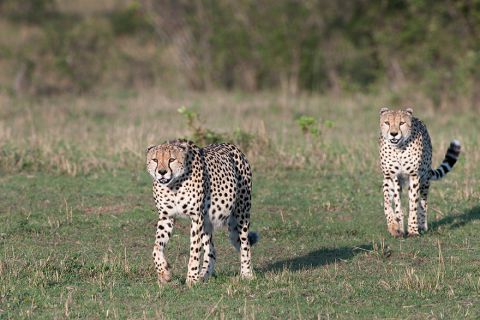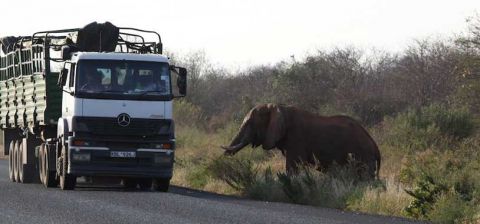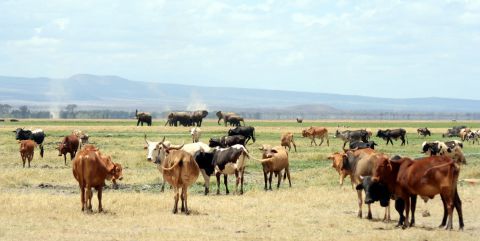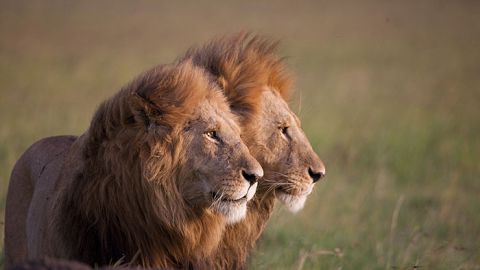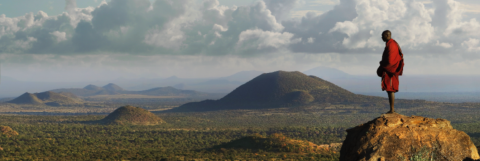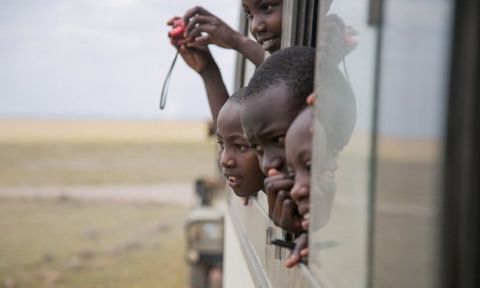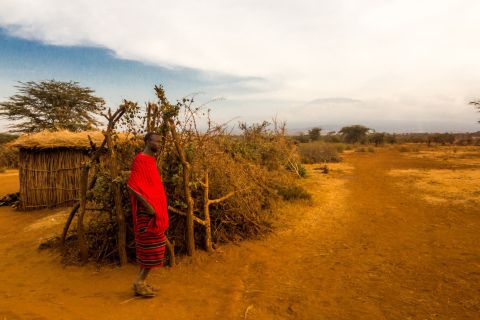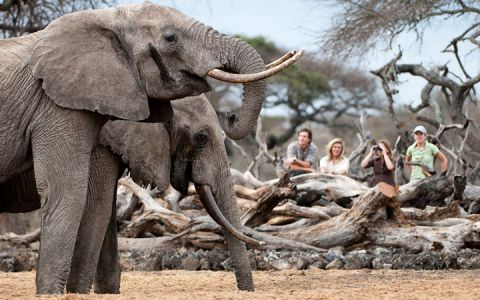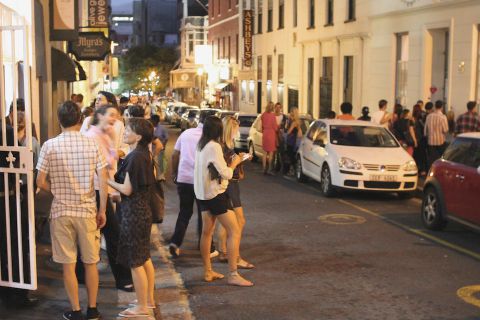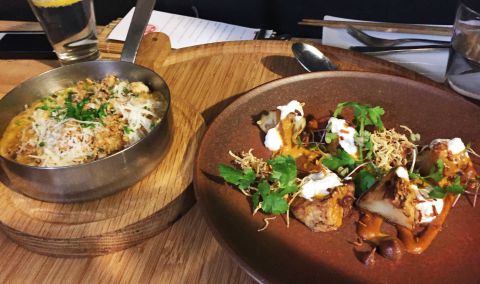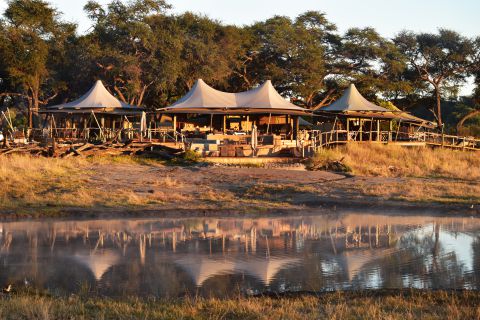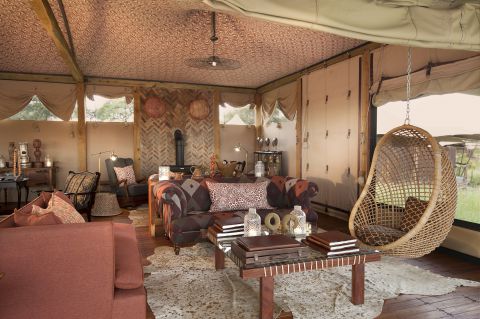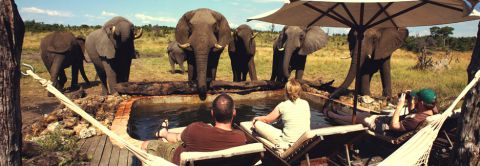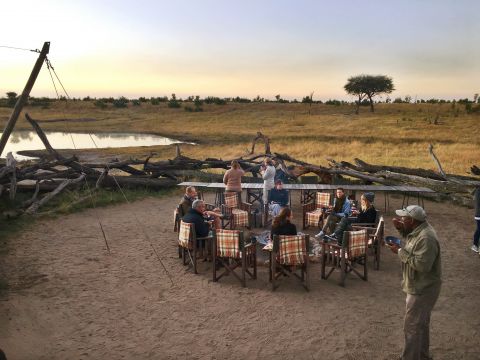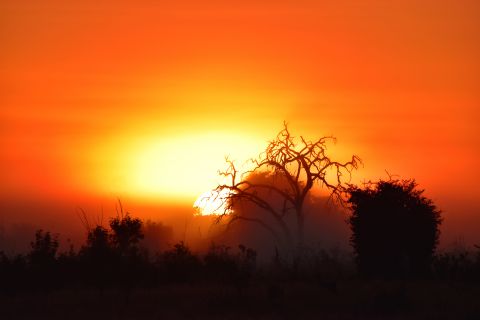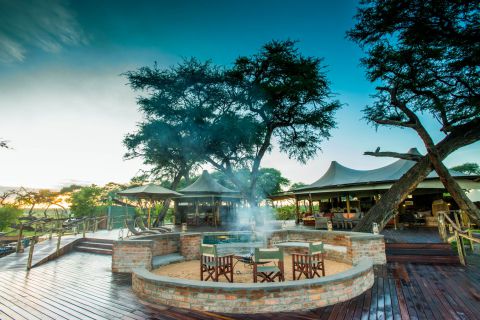Around the Next Corner & Other Tales
The Ultimate Escape: Safari & Beach
Posted 2016-11-11
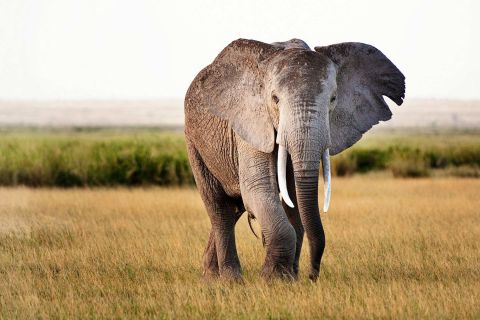
Need to escape from the stresses of daily life? There is no vacation more perfect than a safari and beach combo for whisking you away to another world. There your days will be filled by sunsets, great food, untouched wilderness and the thrill of new experiences. By pairing the beach with safari, you get the best of both worlds: incredible game viewing and the blissful relaxation of a beach holiday.
Kick off your African adventure by exploring the sweeping savannahs, ancient ebony forests, and lush hills that harbor some of the world’s best game viewing. Sip on sundowner cocktails and listen to traditional tales around a crackling campfire every night. Fall asleep with the calls of the wild filling your ears and the promise of a new day eagerly dancing around the edge of your sleepy mind. Safari is the ultimate getaway, with each day giving rise to unexpected adventures and incredible memories.
For a grand finale, we like to round out your safari with some white sand beaches and aquamarine water. The Indian Ocean offers some of the most breathtakingly beautiful beaches where you can revel in barefoot ease, snorkel on pristine reefs, and nap in the shade of swaying palms. Amid the tropical idyll you can reflect on your safari adventures and revitalize yourself before heading home.
Check out our favorite safari & beach combos!
The Secret to Photographing like a Pro
Posted 2016-11-04
Africa is the best place in the world to try your hand at wildlife photography. Whether you’re a photography enthusiast or are just learning the ropes, Africa will provide you with stunning scenery, a gorgeous abundance of wildlife, and golden hours that would make a Nat Geo photographer cry tears of happiness.
Even if you have already bought a nice DSLR camera, there’s a good chance you haven’t bitten the bullet and invested in a telephoto lens. They’re quite the financial commitment, especially if you’re not regularly photographing wildlife. Sure, you could take some spectacular safari photographs with a telephoto lens, but maybe you just can’t justify that kind of investment for just a few uses.
This is where the magic of Borrowlenses.com comes into play. This brilliant website lets you rent telephoto lenses for a fraction of the price of buying one. It’s super easy – just browse their selection, choose a lens compatible with your camera, set the time frame you need it, and click done! The lens will arrive on the day you choose, and when you’re done, you simply ship it back in the pre-addressed, pre-paid box they provide. How simple is that?
As a bonus, you can also rent entire camera set ups – the perfect chance to test out that new camera you’ve been dreaming about before committing to a big purchase.
Now get snapping! Africa awaits…
Why You Should Always Travel with an Avid Birder
Posted 2016-10-27
I love wildlife an incredible amount, but birds just don’t tickle my fancy. The big, colorful ones are fun to spot, but you’ll never find me plastering binoculars to my face in an endless search for little brown jobbies, or LBJs as they’re affectionately known in the birding community. Birdwatching is an acquired taste – it seems like you either love it or hate it.
On a recent trip through Zimbabwe, I found myself in the company of hardcore birder. He had been on safari more times than he could count so he wasn’t going to commandeer the game drives in search of LBJs…except for the orange-winged pytilia. This particular bird had captured his attention – it had a small home range and was rare even within that limited space. On arrival at each new camp, he would ask the guides if any were found in the area, his voice laden with unmasked hopefulness. At every wildlife sighting, every coffee break, every sundowner, he would take a few moments to scan the surrounding trees, checking for his elusive friend.
This is the orange winged pytilia. Sure, it’s a pretty bird – but would it, or any other bird for that matter, ever hold sway over several years of my game drives?
No.
Or so I thought…
While enjoying lunch on the deck of Nehimba Lodge in Hwange, he suddenly shot to his feet, nearly knocking over his plate and several others. Everyone looked up in surprise as he bounded down to the edge of the waterhole, binoculars in tow and baseball hat strategically turned around for maximum birdwatching abilities. He was practically vibrating with excitement as he starred intensely through his binoculars, hoping to see the telltale orange wings that would confirm his suspicions.
“There it is…it’s an ORANGE WINGED PYTILIA!”, he exclaimed with his arms thrust victoriously above his head.
Ironically, his enthusiastic outburst scared the little guy off, but not before he had managed to identify its fleeting form. For the rest of the day he wore the biggest, most genuine grin I have ever seen on a person. I marveled at the purity of his contentedness, and began to wonder: ‘Should I give birding a try? Maybe this guy has discovered the great secret to a happy life…’
The next day I started taking note of the birds we were seeing, and much to my (and his) surprise, so were several other people in our group. Beyond seeing beautiful birdlife, birding brought on an unexpected but incredibly great benefit to our game drives. When you’re stopped at an unusual bird sighting, suddenly the bush comes to life in a whole new way. Without the ever-present rumbling of the engine, the subtle susurrations of the bush suddenly flood into your ears. You start to notice the nuances of their behavior and how it reveals hidden dynamics in the landscape that you never before appreciated. With an aerial view, they are able to spot predators first, sending out alarm calls and alerting you to a stealthy leopard to a hidden pride of lions. When in doubt, bring your favorite birder for they are sure to bring you good luck in the bush.
I'm proud to call myself a birder now. Slowing down and watching the birds gives you a privileged insight to the magic of the bush. It is a magic that only reveals itself to those who wait, and to those who love the birds.
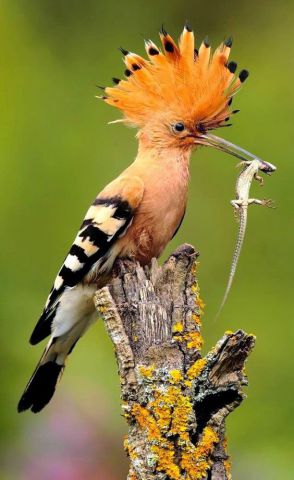

Embrace the birding way of life yourself!
Sundowners at Home: Blueberry Gin Royale
Posted 2016-10-13
Anyone who has been on safari knows that the sundowner is not only a time honored tradition of bush life, but also an incredibly lovely way to end your day. After a wonderful day exploring the wilderness, you find a beautiful spot to silence the rumbling engine and let the golden light and gentle susurrations of the bush wash over you. It may be too hard to bring home a baby elephant, but you can certainly bring home the tradition of watching the sunset while sipping on a delicious cocktail.
For your first stateside sundowner, try this delightful recipe for a blueberry gin royale, courtesy of Singita Sasakwa Lodge. Sip, relax, and reminisce about life on safari:
Ingredients: (makes 4 cocktails)
- 1 cup blueberries + extra for garnish
- 1 cup water
- 1 cup sugar
- 1 bottle sparkling wine
- ½ cup gin
- 4 long sprigs of thyme
- 1 cup of ice
Crafting the cocktail:
- Bring blueberries, water, and sugar to boil in a small saucepan. Reduce heat and let simmer for ~10 minutes or until the berries are soft and the simple syrup is a lovely, bright pink color.
- Remove pan from the heat, strain out the blueberries, and allow syrup to cool.
- Combine ice and gin in cocktail shaker and vigorously shake until gin is cold.
- Divide the gin between four champagne flutes and add 1 tablespoon of blueberry syrup to each glass. Top off each one with sparkling wine, taking care to pour down the side of the glass.
- Garnish with fresh blueberries and a sprig of thyme
Serve immediately while daydreaming about these stunning views from Singita Sasakwa in Tanzania.
Recipe & photos courtesy of Singita Sasakwa Lodge
Protecting Africa's Wild Heart
Posted 2016-09-15
Engineering Africa’s Landscapes
Every species has a role in its ecosystem, whether it decomposes rotting trees, hunts as the apex predator, or keeps soil porous while tunneling. But some species are special – the impacts they have on their environment far outweighs their population size. In other words, there may not be many of them, but the ecosystem and its myriad other inhabitants couldn’t function without them. Such animals are called ecosystem engineers. Just like our engineers, they alter the physical structures of the ecosystem, thus creating habitat niches for countless other creatures. Throughout Africa’s diverse ecosystems, elephants take on this important role. They spread seeds far and wide; knock down trees to form habitats for ground dwellers; dig into the earth to create water holes; fertilize the flora with their mineral-rich dung; and carve pathways through dense vegetation to open up the bush for other animals. Elephants are the beating heart of Africa’s vast, dynamic wilderness. In short – Africa NEEDS elephants. Unfortunately, elephant populations have been undergoing drastic declines over the past century.

The Great Elephant Census
Whenever conservationists would cry for attention on the dire state of Africa’s elephants, governments would shrug off the problem. ‘It’s impossible to get a real reading on the problem.’ ‘Nobody really knows how many elephants there are.’ ‘Elephants? They’re fine! Just ask the rural farmers.’ ‘Who cares? They’re just elephants.’ Without any solid evidence, there was no way to make people care. Two years ago, philanthropist and business magnate Paul G. Allen set out to change that.
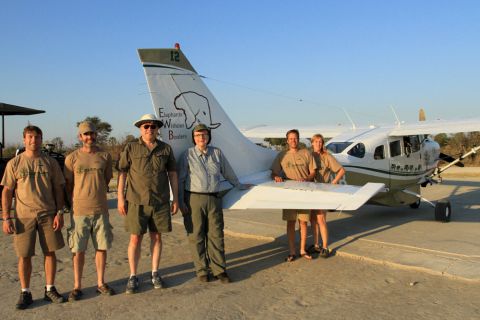
To get a better idea of where Africa’s elephant population stood, researchers undertook a Pan-African survey. Never before had a census this expansive, this thorough, this challenging been attempted. Many said it was impossible, that it would fail – but perseverance and meticulous planning prevailed. Over two years of dedication and countless hours of manpower, this ambitious project took flight. The census consisted of aerial surveys that covered 345,000 square miles in 18 countries across Africa. Each crew followed strict research protocols to ensure the data collected was both high quality and consistent. Thanks to their efforts, the a much clearer image of Africa’s elephants emerged.
Many regions revealed heavy losses – the result of poaching, culling, and habitat loss. Fortunately, several areas showed stable populations and even improvements. Among the countries doing a good job protecting their elephants are Botswana, South Africa, Kenya, and Uganda. The heaviest poaching was in Tanzania and Mozambique. Other countries, notably Zimbabwe and Zambia, showed wide internal variation between declining and thriving populations depending on the type of land management. Such variation indicates that while some areas are being well-conserved, others are still tragically at the whim of poachers.
Overall, a total of 352,271 elephants were counted during the survey. Sadly, 15 of the 18 countries showed a whopping 30% decline between 2007 and 2014 (that’s 144,000 beautiful elephants lost forever). Currently, the rate of decline is 8% per year mostly due to poaching, with the rate increasing each year. While 84% of the elephants were in protected areas, there were still many carcasses within the national parks, implying they’re struggling regardless of location.
Moving Forward
Having cold, hard facts certainly makes the stark situation harder to deny. Hopefully now that the information is out there, governments will start conserving better. No longer can they feign ignorance and turn their backs. More stringent protection laws, increased funding for ranger programs, cracking down on the legal and illegal ivory trade, and better support for conservation researchers – these are just a few of the ways governments can help save Africa’s elephants. It’s not too late and thanks to the efforts of Paul Allen and his dedicated team, we now have an arsenal of information to fight for the future of these beautiful creatures. As ecosystem engineers, Africa’s landscapes will change forever if elephants go extinct. Protecting elephants means protecting Africa’s wonderful, wild heart.
Experience wild elephants up close and personal
12 Reasons Why Travel Makes Us Happier
Posted 2016-09-08
Traveling makes us happy – not only in the moment, but in the long term too. Cultivating your personal happiness is one of the most important parts of living a healthy life. A happy mind supports a healthy body – what’s not to love about that? Traveling is such a wonderful way to invest in your happiness, and there’s simply no destination better than Africa!
It gives you something to look forward to. Planning your safari gives you something to look forward to for months leading up to departure. From receiving your itinerary full of beautiful camp photos, to planning out the perfect safari wardrobe, and to endlessly daydreaming about lions and rhinos – the build-up is so fun!
You get to treat yourself. Nothing lets you unwind and enjoy some total indulgence like being on vacation. Luckily, safari camps have mastered the art of bringing luxury into the wilderness. Think bubble baths under the stars, massages on your secluded veranda, private dinners under an acacia tree, and sipping on champagne while watching elephants wander by.
You meet new people. There’s something about being away from home, in a new place that makes you more willing to open up. Along with the wonderful local communities, you will also get to meet other travelers from around the world. Expanding your mind by expanding your circle of friends.
Spending money on experiences, rather than things makes us happier. Studies show that you will be happier when you spend your hard earned money on new experiences, such as going on safari, rather than more things that clutter up your life.
You expand your mind. Studies on the psychology of travel show that travelers are happier when their trip promotes self-growth rather than just leisure. Whether you’re learning a new skill like wildlife photography, learning about a new culture, or learning about the incredible African animals, an enriching travel experience helps make you a happier person long after you’ve returned home.
You get the chance to disconnect from the digital world. With the prevalence of social media in our lives nowadays, the chance to reconnect with your friends, family, and the natural world can be elusive. No beeps, no buzzes, and no distractions – sounds pretty nice, right?
You have time for self-reflection. All that time away from the stresses of your daily life and the omnipresent social media means you will have time for self-reflection. Every once in a while it’s good for your peace of mind to think introspectively and take stock of what’s important to you in life.
It’s a chance for deeper connections. Whether you’re looking for a deeper connection with your friends, family, or nature itself, there is something about a safari that just encourages it. It allows tension to melt away, encourages laughter and story sharing, and forges bonds among old and new friends alike. Nothing brings you closer like stargazing around a campfire or sharing a sundowner overlooking the plains.
It turns you into a storyteller. Sharing the stories of your amazing time in Africa will make you feel happy, interesting, and confident. Going on safari is one wow moment after another – you’ll have no end of fascinating stories to share at your next dinner party.
It gives you a place to escape to when you need a mental vacation. Feeling stressed about deadlines or stuck in a miserable traffic jam? Take a few minutes to yourself and escape back to those wonderful memories of your time in Africa. Remember the time you saw a leopard in a tree, or when you watched baby elephants romping about. Taking short mental breaks makes you happier by helping break the cycle of everyday stress.
Distance from your daily life makes you appreciate it that much more. Is your job feeling a little too stressful? Did you dog chew on one too many shoes? A little time away will help you appreciate all the wonderful things you love about your life back home.
Happiness is infectious. Africa is home to some of the most wonderfully welcoming and friendly people. The minute you see those warm smiles greeting you at your safari camp you’ll feel happy. Happiness begets more happiness, and the best part is, you’ll bring all that good energy home with you.
I’m ready to get travel happy!
Green Season Magic
Posted 2016-08-25
African travel is roughly broken up into three categories: the dry season, the green season, and the shoulder season. The differences are simple enough – during the dry season no rains have fallen for several months, creating an arid landscape where water is the most precious resource. By contrast the green season is when the annual rains bring a flush of green back to the landscape, creating an Eden of ample grazing and free flowing water that animals thrive in. The shoulder season is the brief time in between when the landscape is neither here nor there – the time when either the leaves are starting to wither, or the new shoots are just starting to push out of the soil.

The dry season is traditionally considered the high season because the sparse vegetation makes the game easy to view. In my opinion, the green season is where the real magic lies. It’s when the bush comes to life, bursting with vitality. Every branch is covered with tender leaves, pans once more fill with tall grasses, and most exciting, all of the sweet little babies are being born. It is a time of plenty, with abundant food and water that can support all the new life springing up. There is nothing sweeter than seeing all those tiny paws and wobbly legs as the new generation find their feet for the first time. Big brown eyes peer out from fuzzy faces, starring at you with curiosity – unlike their parents they’ve never seen a safari vehicle. Beyond just the overwhelming cuteness, there is always the possibility of actually witnessing a birth. The cycles of nature truly come to life during this time of year.
Another huge bonus of the green season is cooler temperatures. Occasional thunderstorms help cool the air and clean it of dust. We’re not the only ones that like the cooler temperatures – wildlife will be more active during the day when it’s not scorching out – always a bonus.
The green season is also a photographer’s paradise. Nothing makes wildlife photos pop more than a vibrant green background. When you have a thousand shades of green framing an animal it really pops, creating contrast from the background and pulling focus straight onto the subject. Whether you’re taking a close-up or a landscape sense-of-place shot, a lush backdrop makes it infinitely better.
Whether you go for the photography, the babies, or the great deals the green season does not disappoint. It’s an incredible time of year to experience on safari. Gorgeous landscapes, abundant wildlife, and cooler temperatures – all huge pluses for the first-time and veteran safari-goers alike.
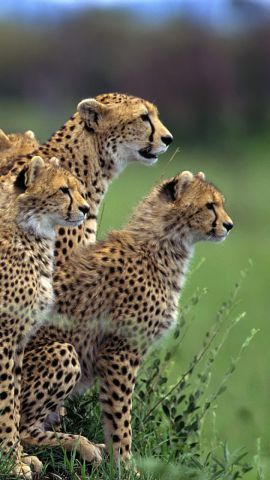
Freedom to Travel
Posted 2016-08-19
Revitalizing Africa's Ecosystems with Wildlife Corridors
Isolation and Bottlenecks
Before humans built cities and roads crisscrossing the natural world, wildlife had the freedom to roam. Their movements were guided by their needs – where was the best food, the most water, the safest birthing grounds? Another important benefit of freedom to move is keeping diversity in the genetic pool. (The genetic pool is all the individuals of mating age.) By allowing individuals from different family lines to mix and breed, it keeps the population diverse and healthy. Without this mixing, closely related individuals will mate, allowing rare, harmful traits to surface. The longer this goes on the more harmful traits will appear, diminishing the health of the population. This phenomenon is called a genetic bottleneck – an apt name since it is the result of a shrinking breeding population. One of the biggest causes of a genetic bottleneck is geographic isolation from habitat loss, resulting in no inter-breeding.
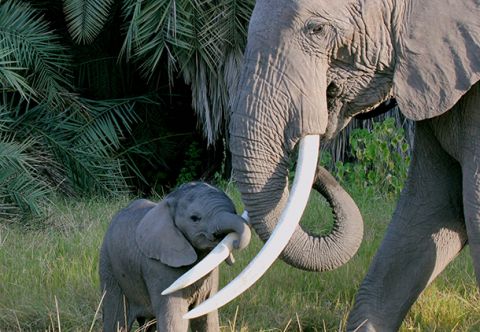
Africa’s Managed Lands
In Africa, land is managed in several ways based on who’s in charge and what’s allowed – there are national parks, private concessions, and game reserves to name a few. What all of these land types have in common is that they are mere fragments of a once great and continuous landscape. This fragmentation means that wildlife cannot move freely between habitats for foraging, hunting, and breeding purposes. Habitat loss is happening at alarming rates due to agricultural expansion and human settlement. No matter how well managed a land fragment is, the resident wildlife can suffer if there is not enough genetic mixing in the population. Wildlife doesn’t understand borders, and countless animals have fallen victim to car strikes, poisoning, or being shot when they wander through developed areas. Nature is resilient and wildlife can normally withstand the pressures of habitat fragmentation, but human conflict can act as the final nail in the coffin of a population walking the line between okay and endangered.
Regrowing Africa’s Edens
With numerous pressures on Africa’s wildlife, reconnecting fragmented habitats could offer a much needed boost to their welfare. It would restore their ability to roam freely, moving between regions in their perpetual search for a better habitat. Beyond that it would give wildlife the space to move away from any threats, such as bush fires, droughts, and pressures from civilization.
But how do you reconnect fragmented habitats? With wildlife corridors! A wildlife corridor is a swath of protected land that reconnects two formerly connected areas. The key is that the land is in a wild state, providing safe passage for wildlife to move freely. With time the overall health of the newly reunited ecosystem will improve and restabilize. Another huge benefit is that wildlife can move away from any human-wildlife conflicts that may occur on the fringe of their habitat.
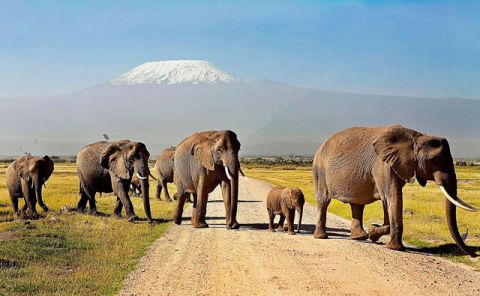
Wildlife corridors seem like such a simple idea in theory but the execution is riddled with challenges. Where does the land come from? Who will manage and protect it? Is it a worthwhile investment for the long-term? In all three of these dilemmas, the local community is key to finding a solution. Not only is the tract of land often patched together from land leased from the local community, but they are also involved in the long-term stewardship of it. They work with those already managing the soon-to-be connected regions, creating a cohesive management scheme that benefits both the wildlife and the local communities through sustainable tourism and conservation jobs. Allowing the land to return to a natural state is a slow process that takes continued community support. Ecosystems are complex and need time to reestablish, especially if it is going to act as a safe haven for wildlife. It may be a few years or a few decades depending on the ecosystem in question. Rainforest could take twenty years before it's suitable for chimpanzees, but savannah grasslands may only take a few years before it can support migrating grazers. Throughout this rewilding process, careful and dedicated stewardship is essential.
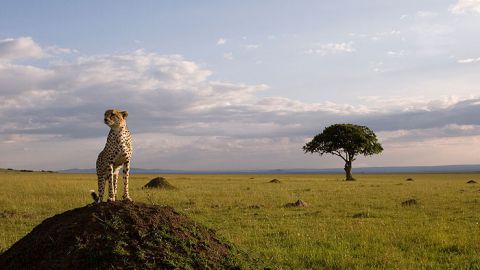
Amboseli, Chyulu Hills & Tsavo West
In the beautiful hills of southern Kenya, the African Wildlife Foundation is reestablishing a wildlife corridor from the Amboseli region to the Chyulu Hills and Tsavo West National Park. AWF is working with the local communities to set up a series of conservancies on leased lands. It is slowly rewilding and in the process reopening historic migration routes for elephant, giraffe, lion, zebra, cheetah, and countless others. Already considered a great success, this corridor should guide future conservation projects.
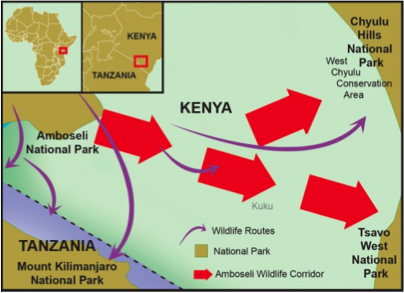
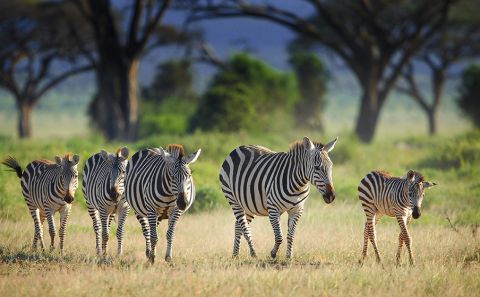
There may be many challenges in establishing wildlife corridors, but they are a key part of Africa’s future. Pristine wilderness is a precious resource, and nowhere else has wilderness quite like Africa. The wildlife is unsurpassed, the landscapes are breathtakingly beautiful, and the sunsets are unrivaled. Wildlife corridors offer hope for protecting Africa’s wild heart by cultivating healthy ecosystems and supporting its beautiful biodiversity.
Dining Out in Cape Town: Chefs Warehouse
Posted 2016-08-11
Throwing Caution to the Wind with Chefs Warehouse
When our clients travel to Cape Town, we take all the guesswork out of the experience so you can relax and enjoy your time in Africa’s mother city, rather than worrying about logistics. We organize your days so you can visit the open markets or local events that are on offer throughout the week. We carefully select restaurants from our list of favorites, matching them to your style and making the reservations for you.
There has been a lot of talk lately about a restaurant called Chefs Warehouse – Casey loved it on her last trip. Living in Portland, Oregon, I’m used to a great food culture and restaurant scene so I decided to test it out. I know all about restaurants who don’t have to take reservations and dismissive, hipster hostesses who couldn’t care less if you get a table that night or not. From this angle, Chefs Warehouse will not disappoint. Barring all of this, I strongly suggest that you surrender one night of control. If you consider yourself a foodie, then I am pretty sure you will thank me.
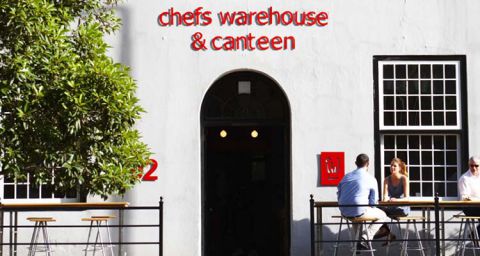
Here’s how it all works - the restaurant seats from 12-8pm on a first come first serve basis, and offers an incredible set tapas menu that changes daily. We showed up around 6:45pm, and put our names on the list. While waiting for our table, we perused the many shops and bars of Bree Street. We happened to be there on the first Thursday of the month, a day dedicated to exploring the city’s culture, and it seemed like the entire town was out and about. With a stroke of luck, we got the last table of the night at 7:55pm. This was cutting it too close so we suggest you go earlier.
Every night owner and head-chef Liam Tomlin crafts a new set tapas menu. Again, throw caution to the wind and let his culinary expertise take the reins. Just let it happen. Aside from the tapas, the menu offers local oysters and a few desserts to choose from. The dining experience is broken down into three courses, one dedicated to seafood, one showcasing vegetables, and one for meat to wrap it up.
First up was a round of tapas featuring fresh seafood. Five different types of seafood were used, each cooked in a unique way. Refreshing tuna tartare paired with prawn toasts, glazed salmon paired with cucumber and a fish roe dressing, and crispy squid with soba noodles and curry inspired spices.
Next we moved onto the mid-course of two vegetarian tapas. Chef Tomlin designed the menu to celebrate seasonal produce. We visited in May, which meant autumnal flavors – a risotto featuring butternut squash and a walnut sage crumb, and a celeriac and apple curry with crisp leeks.
The third and final round was a selection of meat tapas. Seared duck breast with caramelized onion rings, braised beef brisket salad drizzled with a horseradish cream, and the real hero – pork belly with miso charred cauliflower. It was perfectly rendered – each bite was sinfully luscious with an inside tender from the melted fat and a chewy, crispy outside. Rich and utterly delicious. It was so good that I forgot to take a picture - a sure sign of a delicious meal.
If you can’t make it for dinner, try lunch. Tapas are a delicious way to break up a day of sight-seeing and shopping.
Start planning your own culinary adventure through Cape Town.
Photos by Teresa Sullivan, Inside Guide, Eat Out, Gourmet Traveler & Cape Town City Guide
Blissful Mornings & Elephant Watching at Somalisa Camp
Posted 2016-08-05
On a recent trip to Hwange National Park, Teresa and I were lucky enough to check out the new Somalisa Camp and all I can say is WOW. Every detail from the welcome on arrival to the thoughtfully and beautifully appointed tents was perfect. The camp was totally rebuilt recently and the new design is absolutely stunning. Think Out of Africa meets wanderlust chic with a Zimbabwean heart and soul. A palette of burnt sepia, soft cream, and burgundy creates a warm ambiance that is rounded out with polished copper accents. Soft folds of fabric create canopied ceilings and a stylish mix of colonial artifacts and handcrafted African art adorn the shelves and walls. The rooms fan out around a grove of ancient acacia trees, each one offering total privacy and panoramic views of the beautiful Hwange landscape.
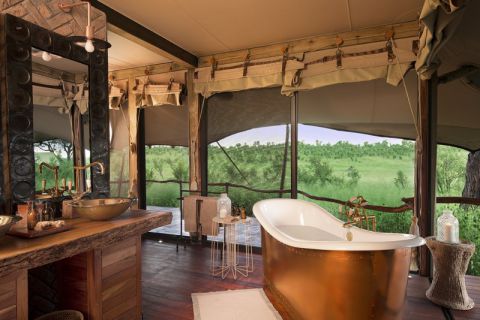
As soon as you step foot onto the property you join the Somalisa family. The staff greets you with arms wide open, welcoming you to their home and insisting you treat it like your home as well. The management and service were on point throughout our entire stay. They were attentive and caring, attending to our every whim and always offering a handcrafted cocktail or delicious nibble while we relaxed in the lounge.
We certainly aren’t the only ones that adore Somalisa – the local elephants love it just as much! They wander through the camp feeding on ripe acacia fruits in May and June, and frequenting the water hole in front of the terraced lounge. When they rebuilt the camp, they created a second pool on a higher deck for people to use, keeping the lower pool exclusively for the thirsty elephants that had claimed it as their own. If you want to enjoy some fantastic elephant viewing right from the bar, you can’t get much better than Somalisa.
Long before the first hint of blue appeared on the horizon, our guide came knocking at the door.
“Good morning! Hellooo, good morning!”
“Errmmmm. Good morning…”
Early doesn’t even begin to cover mornings on safari, nor does chilly begin to cover Hwange nights. When you get that combination, not even the promise of a leopard could convince me to get out of bed. But somehow the wonderful staff at Somalisa have perfected the art of coaxing guests out of their warm beds. Each tent has been designed for luxurious coziness, with touches that have been carefully crafted for blissful comfort. Wood burning fireplaces and hot water bottles (affectionately called bush babies) keep you cozy all night, but my favorite surprise came during that early morning wake-up call. A carafe of steaming coffee, fresh cream, and pre-warmed mugs await you in a butler hatch cleverly built into the tent so that you don’t even have open your door to the cold. Now if you’re anything like me, you could get the best night of sleep ever and still want nothing more a giant cup of coffee first thing in the morning. Somalisa majorly delivers on this point.
But the incredible Somalisa mornings don’t end there. As I wandered down to the main area coffee in hand, I was greeted by the delicious scent of breakfast cooking over the campfire. The staff had already laid out an impressive spread – slow cooked oatmeal, fresh fruit, eggs and bacon cooked to order over the fire, even local honey. As we ate the mist slowly rolled into the valley, creating one of the most stunning sunrises I have ever seen. After being thoroughly sated with delicious eggs and a carafe or two of coffee, we took off on a game drive in search of Hwange’s legendary wildlife. If you ask us, life at Somalisa Camp is pretty fabulous.
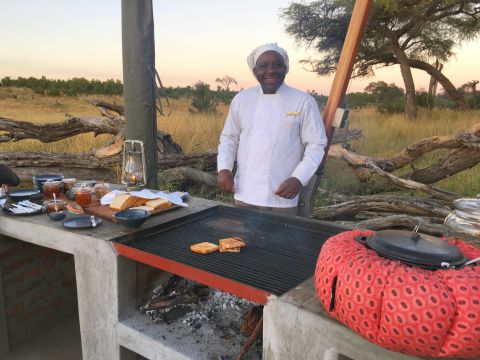
Start planning your own Zimbabwean adventure!
Photos from Somalisa Camp & Kelsea Lee
Explore by date



